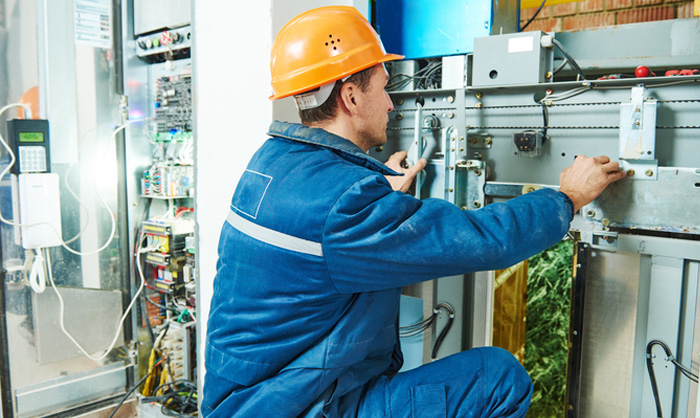There are several codes and guidelines in place designed to regulate the electrical design of an elevator. It can be overwhelming as an elevator designer to think of them all, especially as you know you have to deal with the elevator inspector, electrical inspector, and the Fire Marshal. They are in charge of reviewing the plans and the overall site, and each one may have their own seemingly conflicting requirements. Worry not: you just need a quick understanding of elevator basics to get through it.

Two Types of Elevators
The main types of elevators include hydraulic and traction.
- Hydraulic elevators have a hydraulic reservoir, controller, pump and cylinder. The pump brings hydraulic fluid to the cylinder from the reservoir below the elevator shaft. Fluid pressure raises and lowers the cab. Limit switches communicate with the controller, stopping the cab at every landing. Cylinders in hydraulic lifts are not feasible for use in buildings higher than five stories. This is where a traction type elevator would be better.
- Traction elevators use cables, pulleys, and counterweights to raise and lower the cab, all powered by a motor.
The elevator equipment room for a hydraulic elevator is located on the lowest floor closest to the elevator shaft. The equipment room for a traction elevator is at the top of the building, adjacent to the shaft.
Your elevator supplier will handle all the wiring and code requirements for the cab and controls. You will need to take care of the items related to the fire alarm, along with supplying power and lighting to the elevator pit and equipment room.
Lighting
You obviously need to have lighting in the elevator equipment room and shaft pit, equipped with wire guards for protection. The light switch in an equipment room should be right near the entrance door on the latch side, while the switch for the pit must be mounted above the seal plate near the ladder.
Elevator cab lights need emergency back-up power, which can be supplied by the building’s own emergency power. If not possible, you will need a battery back-up unit for powering the lights in case an outage occurs.
Fire Alarms
Smoke detectors should be connected to the elevator controllers via auxiliary contacts and wiring, or from the fire alarm control panel. If a smoke detector sounds, the elevator will go into “Fire Recall Function,” and the cab will then travel to the pre-programmed designated landing. It will then open its doors and stay there until the alarm is cleared. The Fire Marshal is the one to approve the designated landing floor, which is usually on grade level for quick passenger exit.
Contact Mowrey Elevator
We have all the electrical components you need for your elevator, from signal fixtures to controllers and just about anything else you can think of to design and operate your lift. Just contact us to learn more about what we offer or browse our comprehensive online catalog in the meantime.
